Its among strangers. Russian ships in the service of the Japanese emperor
In our narrations, we move a little away from the theme of Lend-Lease and return to the beginning of the 20th century. The Russian-Japanese war, as it turned out, not badly replenished the ranks of the Japanese fleet due to the Russian fleet. Both due to the rise of unsuccessfully flooded ships, and due to, no matter how shameful it may sound, surrendered.
But the most interesting thing is the conclusions that suggest themselves when studying the material on these ships and events.
Let's start with, perhaps, the famous ship of the Russian-Japanese war.
Armored cruiser 1 rank "Varyag".
Varyag was laid in 1898 year, in Philadelphia, at the shipyards of William Cramp and Sons. In 1900, the ship was transferred to the Russian Navy and entered service in 1901.
9 February 1904 of the year "Varyag" engaged the Japanese squadron under the command of Rear Admiral Uriu. The Uriu squad included 2 armored cruisers (Asama and Chiyoda), 4 armored cruisers (Naniwa, Niitaka, Takachiho, Akashi) and 8 destroyers.
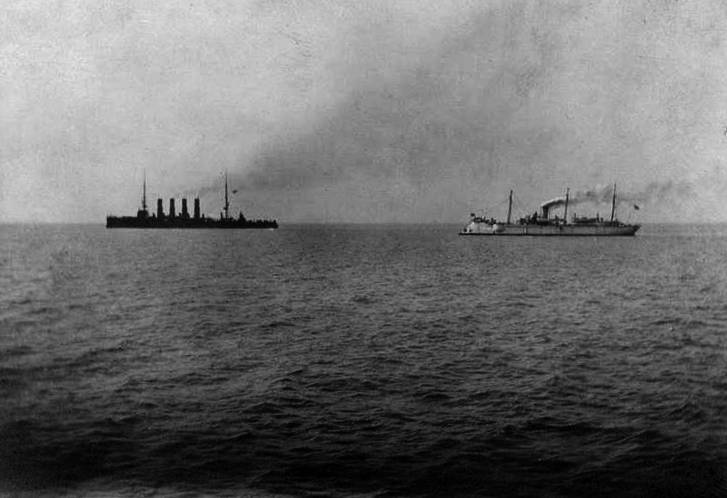
According to various sources, in an hour-long battle, the cruiser received from 7 to 11 hits, including one breach of 2 square. m. at the waterline. crew losses - 1 officer and 30 sailors killed, 6 officers and 85 sailors wounded and contused, and about 100 people were slightly injured.
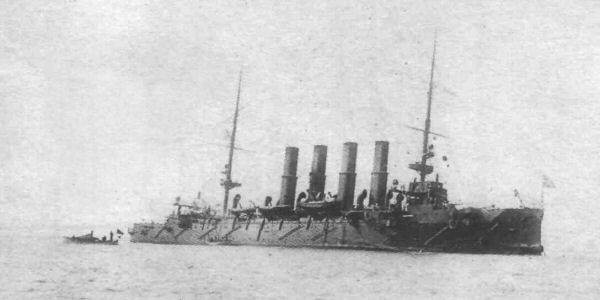
According to Rudnev, the ship was unable to continue the battle, which served as the basis for returning to Chemulpo and the subsequent destruction of the ship. After the transition to neutral ships, the Varyag was flooded by the opening of the Kingston.
However, 8 August 1905, the Japanese have carried out the rise of the "Varyag". 22 August 1905, the cruiser was incorporated into the Imperial Japanese Navy and put into service after the 7 repair in July, 1907, as an 2 class cruiser called "Soya" (according to the Japanese name of the Laperuz Strait).
More than seven years, the ship was used by the Japanese as a training.
The Japanese made a very smart and beautiful move. Considering that the actions of Rudnev were very close in the spirit of bushido, they taught their sailors with the example of “Varyag”. Thanks to the emperor's highest rescript, the Russian name was left at the stern of the cruiser.
In 1916, the cruiser "Soya" (together with the battleships "Sagami" and "Tango") was bought by Russia. 4 April, the Japanese flag was lowered and 5 April 1916, the cruiser was transferred to Vladivostok, after which under the former name "Varyag" was incorporated into the fleet of the Arctic Ocean.
In February, 1917 "Varyag" of the year went to repair in the UK, where it was confiscated by the British, because the Soviet government refused to pay the debts of the Russian Empire. In 1920, resold to German companies for scrap. In 1925, when towing, the ship hit a storm and sank off the coast in the Irish Sea.
The battleship "Emperor Nicholas I".
Launched in June 1886, the Society of French-Russian factories. Launched 20 May 1889. Launched in April 1891.
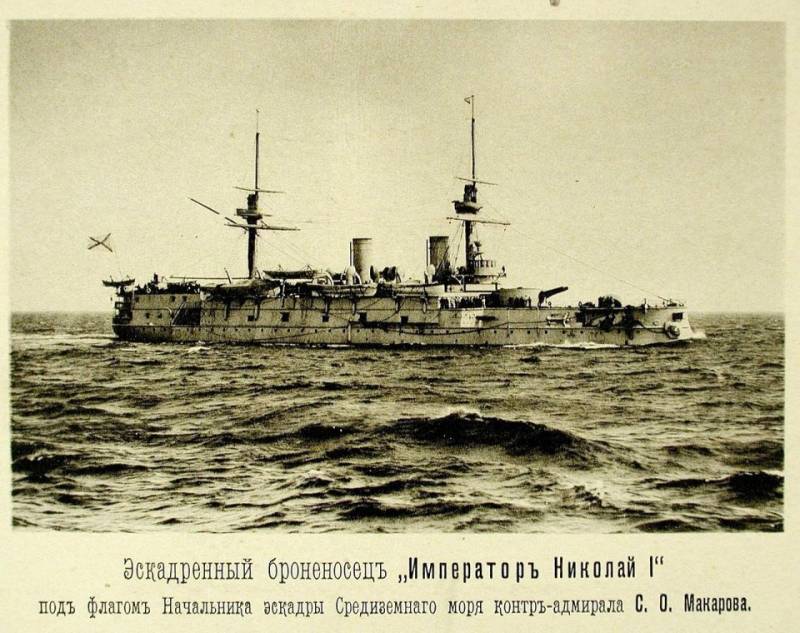 [/ Center]
[/ Center]The battleship was a somewhat improved type of battleships "Imperator Alexander II" - with a tower installation, modified ute and the location of boats and boats.
The ship turned out very peculiar, but nevertheless, his service was very intense. "Emperor Nicholas I" participated in the celebrations on the occasion of the 400 anniversary of the discovery of America in New York, kept the watch in the Mediterranean. In 1895-1896, he made the transition to the Far East under the flag of Rear Admiral Makarov. In 1897-1898, the squadron of Rear Admiral P. P. Andreev participated in the international peacekeeping operation in Crete.
3 February 1905 was appointed the flagship of the Separate detachment of ships under the command of Rear Admiral Nebogatov. The ship was commanded by the captain of the 1 rank V.V. Smirnov.
Participated in the battle of Tsushima. Serious damage was not received (except for the 305-mm turret cannon cut off by the projectile), but spent more than 2 / 3 ammunition. Losses made 11 people killed and 16 wounded. Damage to the Japanese battleship Fuji and the armored cruisers Asama and Izumo.
15 May 1905, surrendered on the orders of Rear Admiral Nebogatov.
23 May 1905 of the year was included in the Imperial fleet under the name "Iki".
After a quick repair and painting, the battleship along with Misima and Okinoshima (the former Admiral Senyavin and Admiral Apraksin) supported their troops in the operation to seize Sakhalin Island, and after the war performed the tasks of an artillery training ship.
In 1910, it was upgraded and classified as a coastal defense battleship. Having retained the rank of armadillo, the ship was used as a training school by a young man and was assigned to the base in Yokosuka.
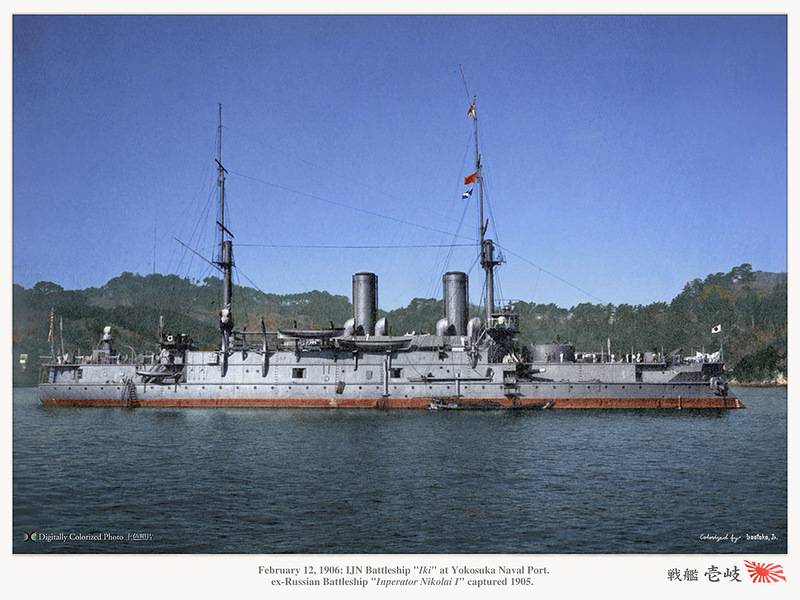
The battleship did not take an active part in the First World War, but was involved in patrol service on its shores.
In October, the 1915 of the Iki was sunk as a target by the Congo and Hiei battle cruisers.
Battleship "Eagle"
The ship was laid in St. Petersburg on May 20 1900, and in the year 1904 was put into operation.
He joined the Second Pacific Squadron, under the command of Captain 1-rank N. V. Jung, took part in the Tsushima battle.
In the battle (according to V.P. Kostenko) he received at least 140 hits, including 42 with shells of 305 caliber and 203-mm. After the battle, a ship with a mortally wounded commander that had lost a significant part of its combat capability joined Rear-Admiral N. I. Nebogatov's detachment and, together with other ships, was captured.
After being handed over and restored, it was modernized by the Japanese (152-mm turrets were replaced with casemates in 203-mm, mine weapons were replaced), the Imperial Japanese Navy became operational as a ship of the line called Iwami 6.06.1905.
August 28 1912 re-trained in the battleships coastal defense 1-th class.
18.08-02.12.1914 - participated in an operation against Qingdao as part of the 2 Combat squad.
09.01-09.09.1918, as part of the 5 Combat Detachment of the 3 Squadron, made an expedition to Vladivostok and Kamchatka.
01.09.1922 g. - According to the Washington Agreement, retrained in auxiliary vessel.
05-09.07.1924 was a target ship for carrier-based aircraft assigned to the Yokosuka airborne wing, which drowned its 240 kg with bombs west of Dzogashima Island near the Miura Peninsula.
Armored cruiser 1 rank "Pallada"
Laid in 1897 year in St. Petersburg, launched on August 26 1899 of the year, put into operation in May 1901 of the year.
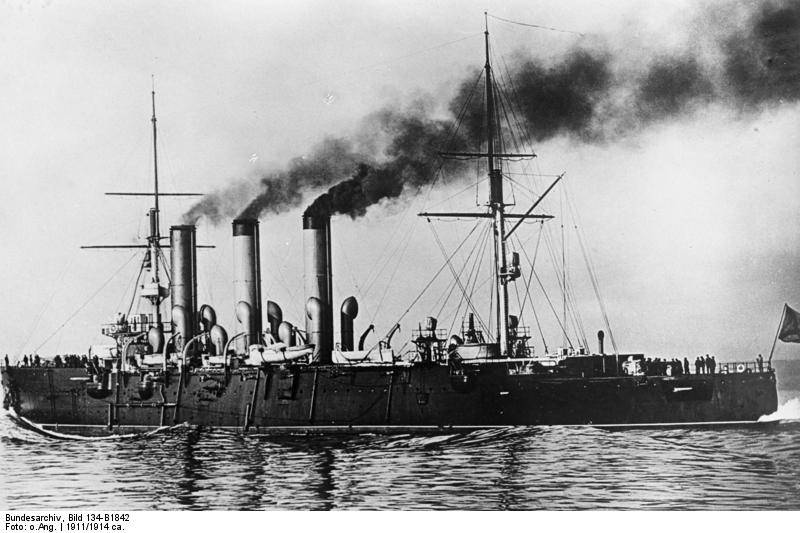
In October, 1902 - April 1903 made a transition to the Far East together with the battleship Retvizan and the same type cruiser Diana, where it became part of the Pacific Squadron.
He took part in the Russian-Japanese war. 8 February 1904 is torpedoed by a Japanese destroyer on the outer raid of Port Arthur. After repairs in April, 1904 returned to service. Participated in the battle in the Yellow Sea, after which, with the main part of the squadron, he returned to Port Arthur. 8 December 1904 was sunk by Japanese siege artillery in the inner harbor of Port Arthur.
In September, 1905 was raised by the Japanese and, after repair and refurbishment, was introduced into the Imperial Japanese Navy under the name Tsugaru.
In 1920 converted into a minelayer, in 1922 excluded from the fleet lists.
May 27, 1924 sunk by the Japanese sea aviation during the demonstration bombing in honor of the anniversary of the Tsushima battle.
Battleship Peresvet
Laid by the Baltic plant in St. Petersburg 9 November 1895 g, launched on May 7 May 1898 g, commissioned on 6 August 1901 g.
From October 1903, he served in Port Arthur.
Since the beginning of the Russian-Japanese war took part in the hostilities. Member of the first battle of the Russian squadron 27 January 1904, and the defense of Port Arthur. It was used as a donor for coastal artillery (three 152-mm, two 75-mm, two 47-mm and four 37-mm guns were removed and transported to the coast). Later, guns (with the exception of three 152-mm) were returned to the ship.
During the defense, he ran aground twice during maneuvers (28.01 and 31.03), 13 of March hit the stern of Sevastopol with a bow. Both ships got up for repair.
He took part in the battle in the Yellow Sea, while trying to break through the squadron in Vladivostok.
Upon returning to the harbor of Port Arthur, Peresvet began to undergo systematic shelling of Japanese artillery. September 19 battleship received 9 shells hits caliber 280-mm. September 28 - 11 hits, September 30 - 4. November 23 Peresvet got five hits with 280-mm projectiles, and the next day 20. After the first ten hits, a strong fire began, and the captain of the 2 rank Dmitriev, who was in command of the ship, was afraid of the explosion of the cellars and ordered the Kingston to open. The ship sat on the ground. The water in the aft reached almost to the upper deck.
20.12.1904 g, on the eve of the surrender of Port Arthur, "Peresvet" was blown up by his crew.
This (as well as the damage inflicted) did not bother the Japanese at all, and in fact immediately after the surrender of Port Arthur, they began to lift the ship.
29 June 1905 of the Year The Peresvet was raised by the Japanese, renamed Sagami and solemnly incorporated into the Japanese fleet. The ship made its transition to Sasebo. Repairs in the dock continued until August 17, after which the ship headed for Tokyo Bay to participate in a parade dedicated to the victorious end of the war.
After the parade, the ship again went into repair, this time a major one, combined with modernization. Work continued until 1909, after which Sagami was reclassified to an 1 class coastal defense battleship.
In connection with the need for ships for the flotilla of the Arctic Ocean being created, Russia in 1916 year turned to Japan with a request to sell it to former Russian ships, inherited by the Japanese as war trophies.
The Japanese sold three ships, including the Sagas. 21 March 1916, the ships arrived in Vladivostok. March 27 “Peresvet” was returned to the original name, at the same time it was reclassified into an armored cruiser.
Battleship "Victory"
Launched 9 February 1899 of the year at the Baltic Plant in St. Petersburg, launched on May 11 1900 of the year, put into operation in October 1902 of the year.
It was a squadron battleship of a slightly improved type of Peresvet, which is a hybrid of a cruiser and battleship and intended for long independent actions in the ocean.
Emperor Nicholas II (together with Aurora) launched the water.
October 29 1902 of the Year “Victory” left Libau and headed to Port Arthur as part of Rear Admiral Stakelberg. 10 June 1903, the battleship arrived at its destination.
27 January 104, the 40-minute battle took place between the Russian squadron and the Japanese fleet.
After this battle, the Russian squadron, with the exception of the stranded Retvizan, left for the port-arthur harbor, where it conducted most of the war.
Victory, which had some of the most long-range guns, fired from the harbor several times at the Japanese ships, which bombarded the port and the city because of the Liaoteshan massif, beyond the reach of coastal batteries.
March 31, shortly after the death of the battleship Petropavlovsk on which the admiral Makarov died, the Victory in 10.10 also exploded on the mine.
2 April, while on the inner roads of Port Arthur, the ship with its radio station interfered with the Japanese cruisers, who corrected the fire of their ships around the city and port. It was the first in stories the use of electronic warfare. 29 April caisson was brought under the ship and began to seal the holes. Nine 152-mm and one 75-mm gun at that time were removed and installed on the coastal fortifications.
The battleship took part in both unsuccessful attempts to break through to Vladivostok.
Since 19 September, when the Japanese got the opportunity to fire ships from large-caliber guns, the Victory received many hits of 280-mm projectiles. In many places, the watertight bulkheads were damaged, so water spread throughout the ship. Battleship strongly tilted to starboard. To reduce the list, the commander ordered the flooding of six onboard leftboard corridors, the left engine room and two coal pits. The roll decreased, but the ship all the bottom sat on the ground. 26 November, with the onset of the night, the team left the "Victory".
October 17 1905 of the Japanese raised the "Victory" and solemnly renamed it "Suo".
The next two years the ship spent in overhaul, during which it was partially modernized. For example, the Japanese replaced the Russian Belleville boilers with Miyabar's boilers, got rid of the linear 152-mm guns, changed the composition of anti-mine artillery.
From 1909, the Suo was listed as a battleship of 1 class coastal defense and served as a training ship. At the beginning of World War I, under the flag of Vice-Admiral Kato, the former Russian battleship acted against the German naval base of Qingdao. Later on, up to 1922, he was again a training ship.
In April, the Suo 1922 was disarmed on the basis of the Navy in Kure. Further, it was used for a long time as a block bag and was scrapped only in 1946.
Battleship "Poltava"
Launched at the 15 plant in February February 1892 g, launched on 25 in October 1894 g, put into operation on 3 June 1900. Sister thorn "Petropavlovsk."
In the fall of 1900, the “Poltava” went to the Far East. The ship arrived in Port Arthur 30 March 1901, and later participated in all fleet maneuvers and campaigns.
Since the beginning of the siege of Port Arthur "Poltava took part" in the defense along with the rest of the ships.
10 June attempted to break through the entire squadron (six battleships, one armored and four armored cruisers and destroyers) in Vladivostok. However, having passed all 20 miles and meeting the main forces of the enemy (four battleships, four armored and eight armored cruisers, not counting outdated and small ships), the commander of the Russian squadron Admiral V.K. Vitgeft turned back. The main reason for this, he called the absence on Russian ships of a significant part of artillery of medium and small caliber, transferred to the strengthening of the land defense of the fortress.
Re-entry, when a significant part of the artillery was returned to the site, took place only on July 28 and led to the battle with the Japanese fleet, known as the battle in the Yellow Sea. "Poltava" had a full complement of artillery of medium caliber and, together with "Sevastopol", closed the column of Russian battleships.
In total, five 152-mm and eight 47-mm guns were destroyed during the battle on Poltava, 12 people died (including one officer) and 43 was injured (3 officer). Despite the rather serious damage, the battleship in general retained its combat capability.
The main damage the ship received from the shelling of Japanese guns, being locked in the harbor of Port Arthur.
22 November in 13.30 280-mm projectile hit it, piercing the port side, armored deck and exploding 47-mm projectiles in the cellar. There was a strong fire that heated the bulkheads, and the flooding system did not function, being disabled by past bombings.
An attempt to extinguish the fire with hoses, filling water through the elevator of the projectile and the ventilation pipes, was unsuccessful: the water quickly flowed through fragmentation holes into the corridor of the propeller shaft. From a high temperature around 14 hours there was an explosion of semi-charges of the main caliber, about 2 tons of gunpowder) Many bulkheads were damaged, and water began to flow into ships.
The “Strongman” steamer that came to the rescue was able to put out the fire, but by the 14.45 “Poltava” sat on the ground, plunging almost to the upper deck.
The crew left the ship, and before the surrender of Port Arthur laid the charges in the engine room and artillery towers.
8 July 1905, the Japanese raised the Poltava, and 21 July enlisted her in a fleet called Tango.
In 1907, a more or less repaired hull without artillery and equipment was towed to the shipyard in Maizuru, where the ship was restored. According to Japanese data, a lot of work has been done.
Instead of 16 blown up by Russian sailors, new boilers of the Miyabara system were installed, damaged and missing implements were replaced, pipes, ventilation vents, masts were changed. In particular, the 305-mm Russian guns were replaced with Armstrong's English systems, which were stored as arsenals in the arsenals. Four towers of medium caliber were replaced by those shot from the surrendered battleship Oryol. Instead of 47-mm guns put captured 75-mm guns. The cellars and ammunition supplies were converted to Japanese ammunition, and 305-mm and 152-mm guns received optical sights.
In 1909, the "Tango" was commissioned as an 1 class coastal defense battleship, while at the same time serving as a training ship for combatant sailors and gunners.
In 1915, the discussion began on the issue of the return of Russian ships. The Japanese agreed to pay for 15,5 million rubles. three ships withdrawn from the active fleet: “Tango”, “Sagami” (formerly “Peresvet”) and “Soyu” (formerly “Varyag”). 21 March 1916, the ships arrived in Vladivostok.
“Peresvet” and “Varyag” received their original names and were enrolled in the class of cruisers. And the Tango was renamed Chesma and appointed a battleship, since the name Poltava already carried a new ship.
Battleship coastal defense "General-Admiral Apraksin"
Laid on at the New Admiralty in St. Petersburg 20 May 1895. It was built according to the design of the battleship "Admiral Ushakov", becoming the third ship of this type. The ship was launched on 30 on April 1896 of the year, and the first test of the machines was in the autumn of 1897. Commissioned in 1899 year.
2 February 1905 of the year "General-Admiral Apraksin" as a part of the Separate detachment of Rear Admiral N. I. Nebogatov left Libava to the Far East. Together with the detachment, the battleship made a long transition to the Tsushima Strait, where, as part of the Second Pacific Squadron, he took part in the Tsushima battle.
In battle, the battleship received minor damage. A total of Apraksin killed 2 and injured 10 people. During the night, the battleship repelled the attacks of the Japanese destroyers and managed to keep up with the main forces of the detachment N. I. Nebogatov, which was a feat at maximum speed in 15 nodes. In total for 14 and on the night of May 15, the battleship fired 153 254-mm projectile and 460 120-mm projectiles.
On the morning of May 15, along with the rest of the ships of Admiral Nebogatov’s squadron, the Apraksin lowered the flag and accepted the Japanese prize team.
According to eyewitnesses, the officers and crew of the battleship were ready to fight to the last and die. The only shot that sounded in the direction of the Japanese ships was the sighting shot from the Apraksin. But the order of Admiral Nebogatov was executed. The only thing that the Apraksin’s gunners managed to do was to throw locks and sights from small-caliber guns overboard.
Since the battleship received very minor damage, the Japanese quickly put it into operation.
The ship, renamed Okinosima, unlike its fellow prisoners, took a very active part in the affairs of the Imperial fleet.
The Okinosima participated in the capture of Sakhalin by Japanese troops. After the war, the battleship was assigned to the base in Sasebo as a training ship.
At the beginning of World War I, Okinoshima took part in the capture of Qingdao (as part of the second division of the battleships of the coastal defense of the second squadron), and then until the 1915, served as sentinel functions.
After the end of the war, he was partially disarmed and used as a swimming pool for the cadets. “Okinosima” was deleted from the lists in 1926 year. Then it was bloody and dismantled for metal in the year of 1939.
Battleship coastal defense "Admiral Senyavin"
Launched 8.04.1893, the Admiralty shipyards in St. Petersburg. Launched 10.08.1894 g. - launching. Commissioned in 1898 year.
Fully repeated the fate in the Russian fleet of his sister thorn "Apraksin". He joined the 1-th Separate Detachment of Rear-Admiral N. I. Nebogatov, heading for the reinforcement of the 2-th Pacific Squadron already on the way.
26.04.1905 - joined the 2 Pacific Squadron at Van Phong Bay. Participated in the battle of Tsushima. Surrendered to the Japanese on the morning of May 15 1905
6 June 1905 was enrolled in the Japanese Imperial Navy as a coastal defense ship of the 2 rank with the assignment of the name "Mishima". October 23 together with “Okinosya” (formerly “Admiral Apraksin”) participated in the naval parade on the occasion of the victory in the Russian-Japanese war in Yokohama. December 20 "Misima" was transferred to the reserve of the first category.
In June 1906, the decision was made to re-equip the Mishima. All old 47-mm cannons were removed from the ship, four Kane 76-mm / 50 guns and two YNauchi-47 signal guns / 30 guns were installed. 15 March 1907, due to the completion of the work, he was transferred to the reserve of the first category, and on August 1 was included in the Second Fleet. In its composition "Misima" made several trips to the shores of Korea.
In World War I, Misima took part in the siege of Qingdao. After the war, transferred to a training ship.
In the 1918 year, in the light of Japan’s participation in the intervention in the Far East of Russia, Misima was rebuilt into an icebreaker. In addition to reworking the shape of the nose into the icebreaker, the nose-gun turret was also removed from it and a bridge protected from frost was temporarily installed.
The first hike from Maizuru to Vladivostok and back “Misima” made in February 1919 of the year and was immediately transferred to the reserve of the third category. In February-May 1920 of the year he went to Primorye several times, briefly joining the 5 division of the Third Fleet.
From June 3 1920 of the year “Misima” was returned to the reserve, in early September of the following year transferred from Maizuru to Sasebo and transferred to the security unit of the naval base as a floating barrack. 1 April 1922, he was excluded from the list of warships and transferred to the category of special purpose ships, later used as a mother ship submarines. From November 1924 to January 1925, the equipment intended for the role of an icebreaker was removed from it. October 10 1935 of the Year "Misima" was excluded from the lists and from January 10 1936, it appeared under the designation "Excluded ship number 7". 9 November 1936, he was sunk by the bombs of naval aircraft during exercises at Cape-Misaki.
In conclusion, just a few words as output. Over the years, 100, we heard almost the same thing: Russian ships were outdated and worthless. The Japanese ships were the newest and magnificent, so Japan won the war "for a clear advantage."
But questions arise.
1. Why did the Japanese rush to rearm what they got afloat and use further? These were no good floating coffins!
2. Why did the Japanese, with such persistence, drag everything out of the water that was badly flooded, and moreover, in the case of the battleships from Port Arthur, it was also undermined?
3. The losing (?) Side redeems their ships for gold, and the winner ... sells. And not all, but only that came to the loser. The battleships Apraksin and Senyavin, being not the most successful ships, for some reason did not interest Russia.
The more you analyze what you read, the more you realize that the Russian ships were not so bad. Otherwise they would have remained where they sunk in the harbors of Chemulpo and Port Arthur. Here it is rather in the naval commanders like Vitgefta and Nebogatov.
Here it is believed for some reason. And in bad ships - no. Especially on the example of three battleships, whose purpose was to serve in the Baltic and fight in the skerries. And they went through half the world to Tsushima. And one before Vladivostok ran like to his home.
Good ships were in that Russia.
Sources:
Suliga S.V. Ships of the Russian-Japanese War.
Molodtsov S.V. Battleships of the type "Admiral Senyavin".
Belov A. A. Battleships of Japan.
http://www.navy.su/1850-1917/bronen/
http://tsushima.su/RU
Photos from the archives of Yuri Chernov, Alexei Emelin and Naval History and Heritage Command.
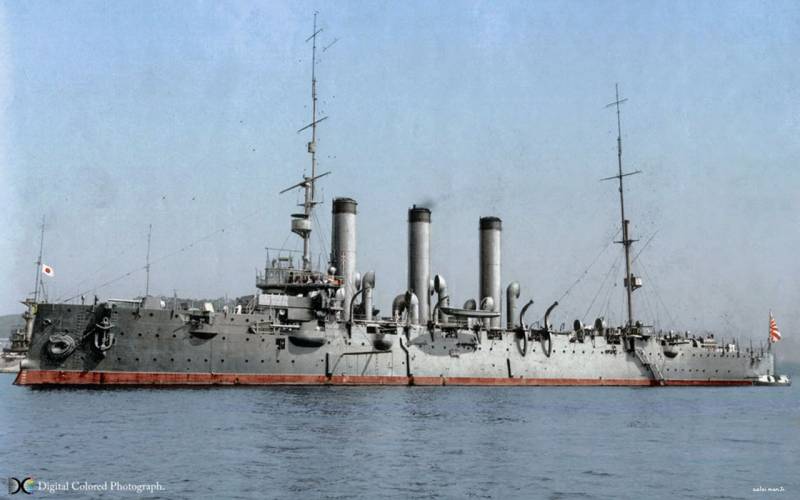
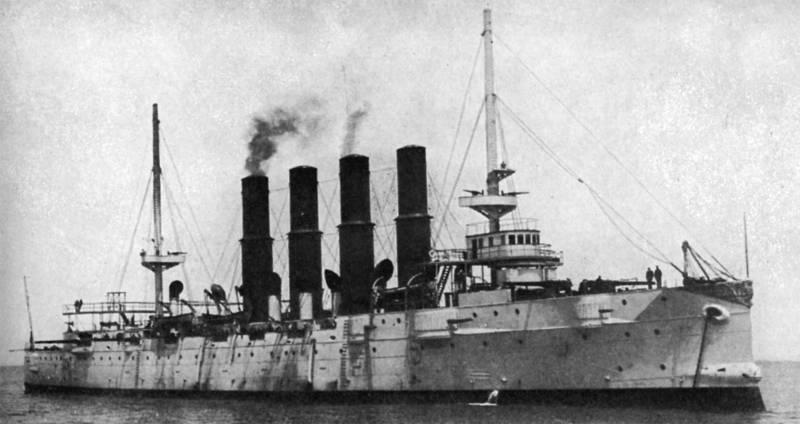
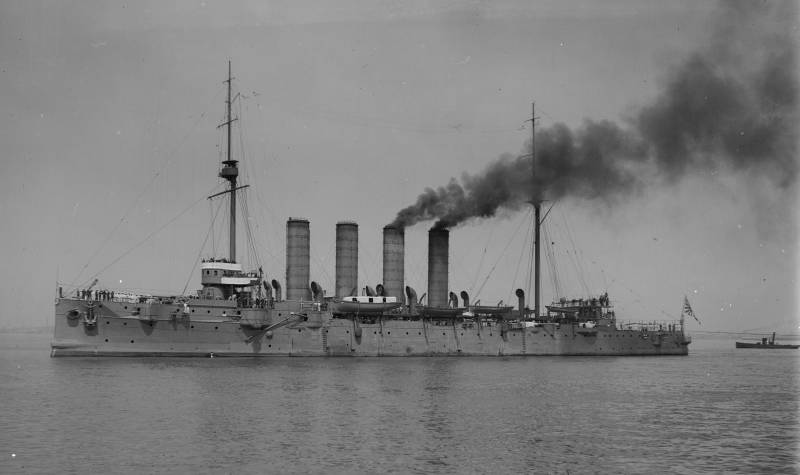
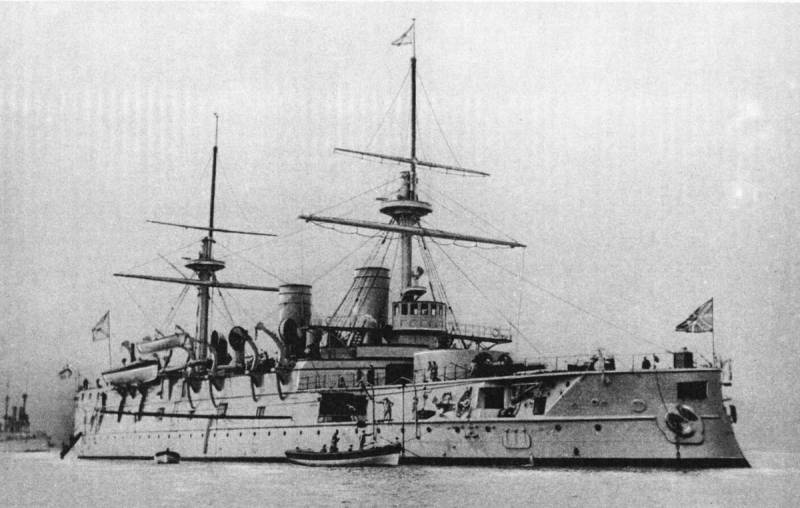
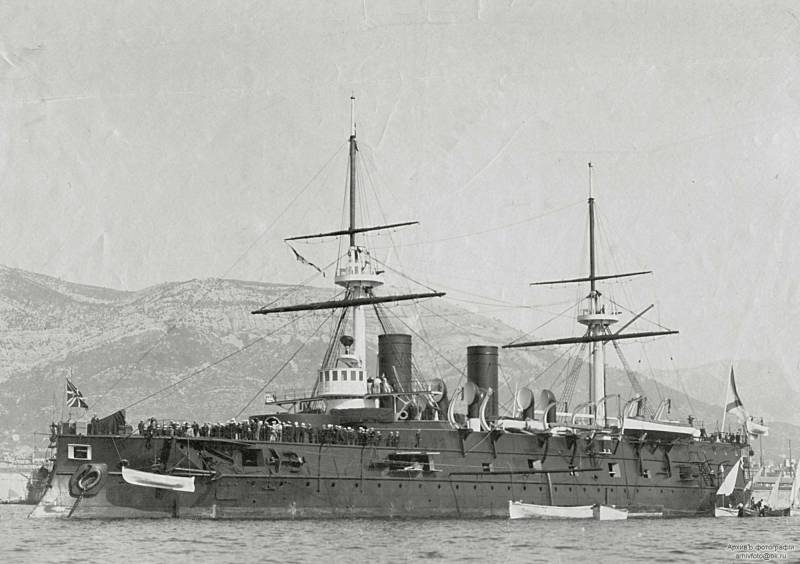
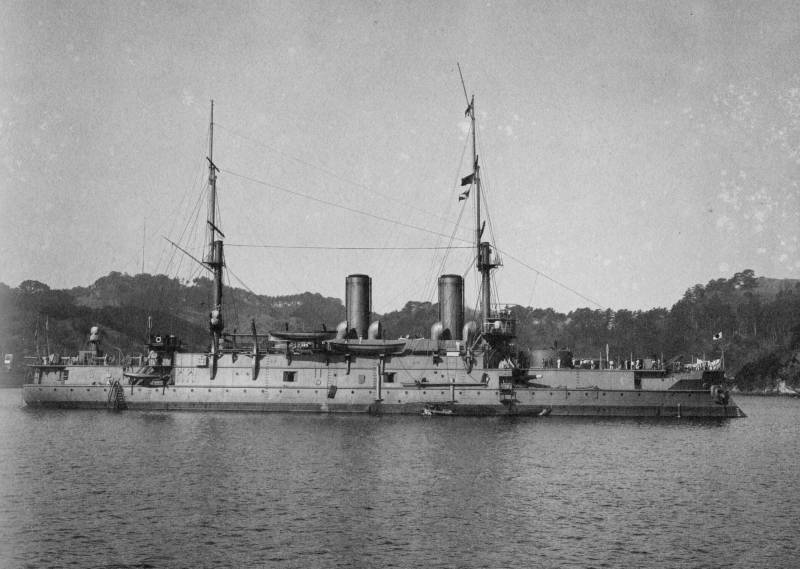
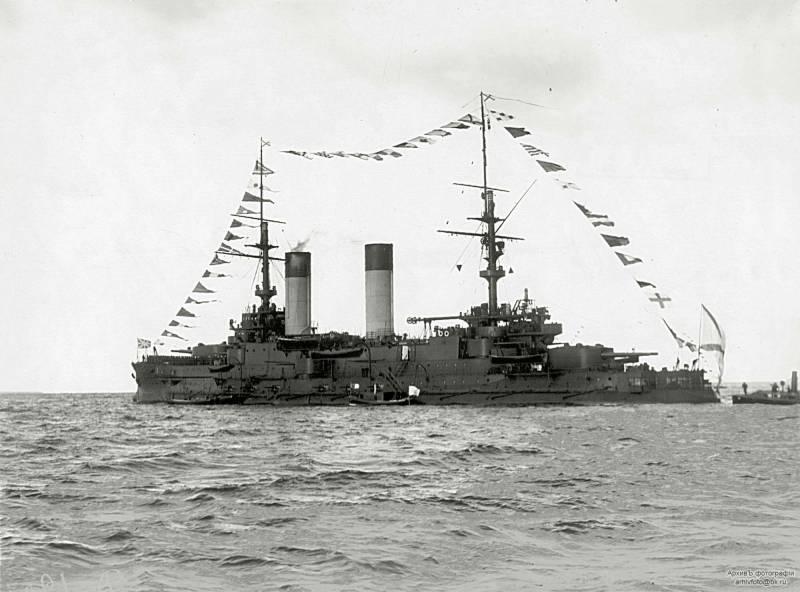
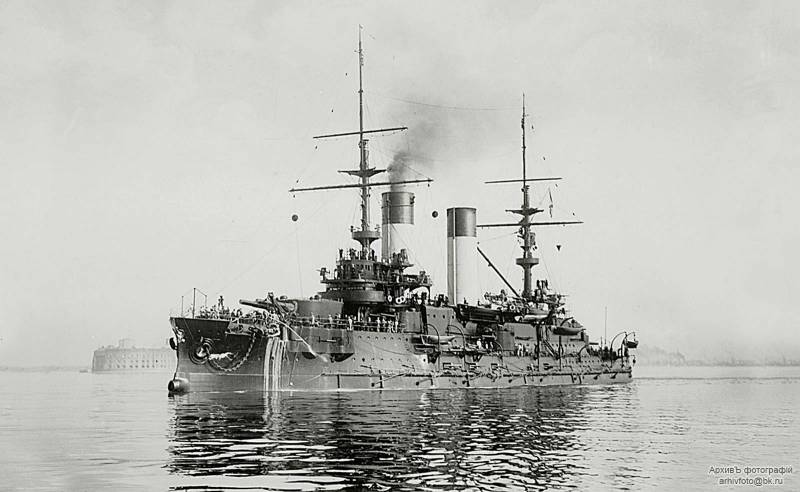
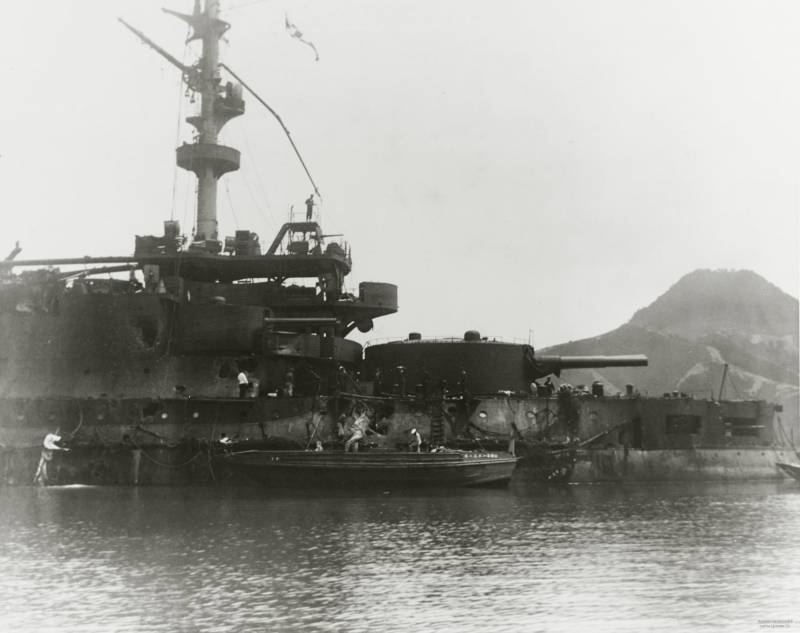
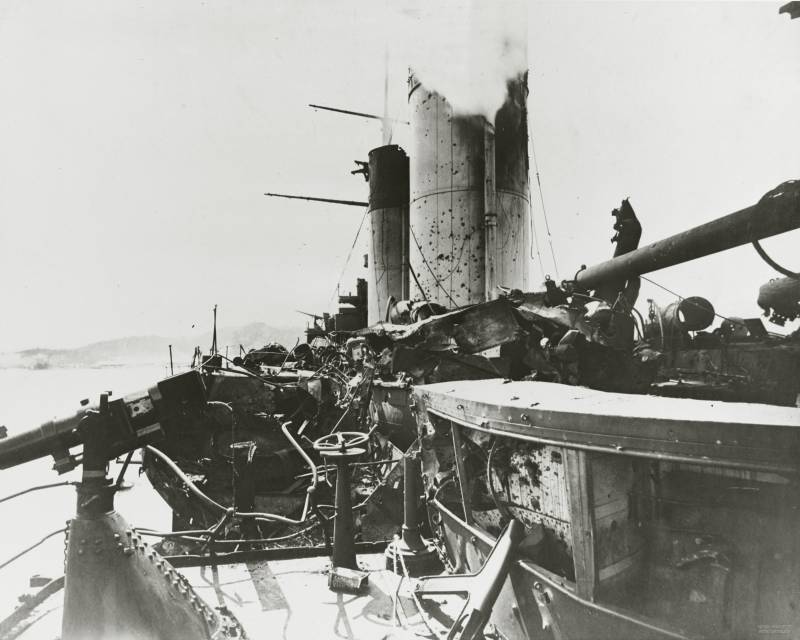
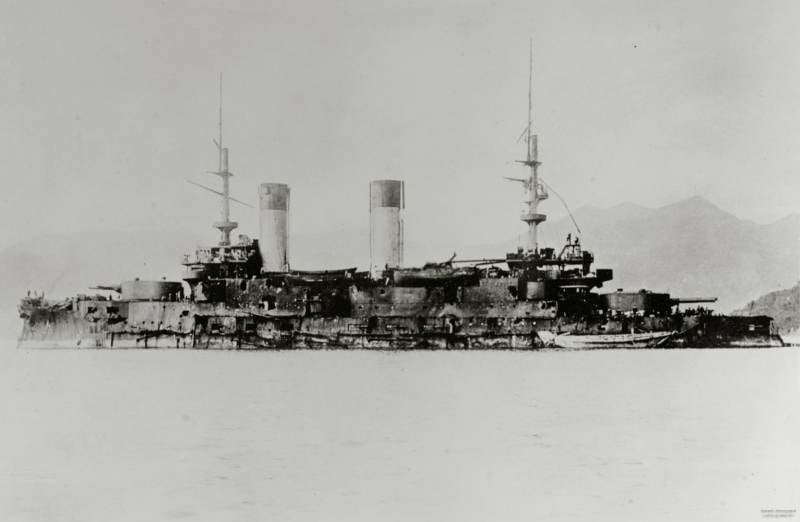
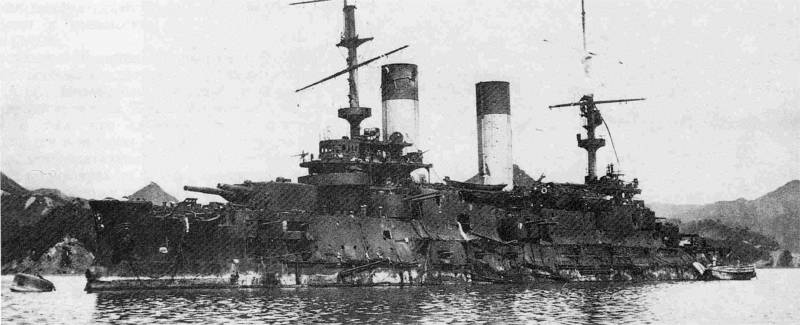
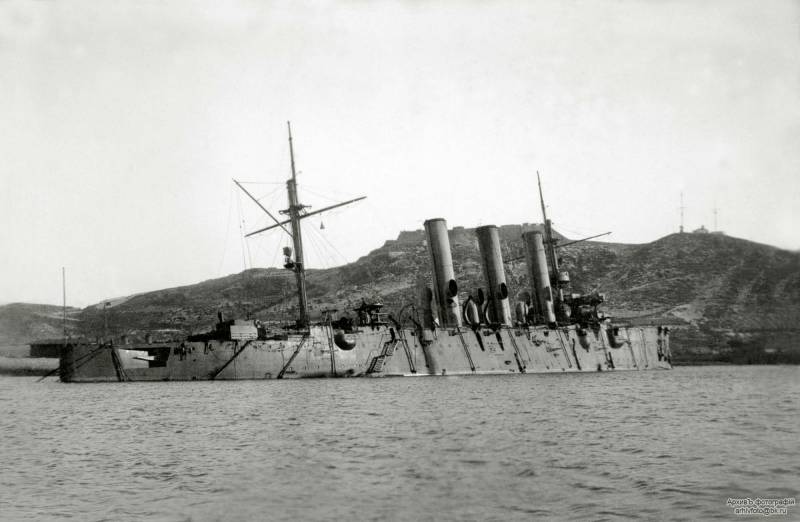
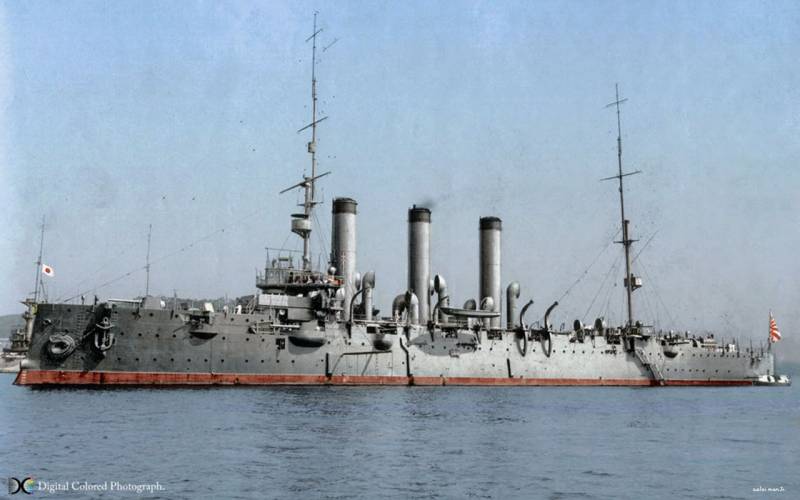
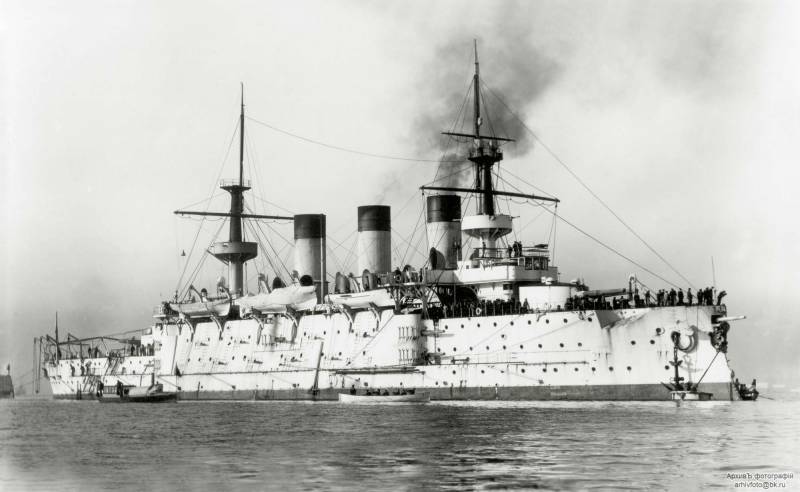
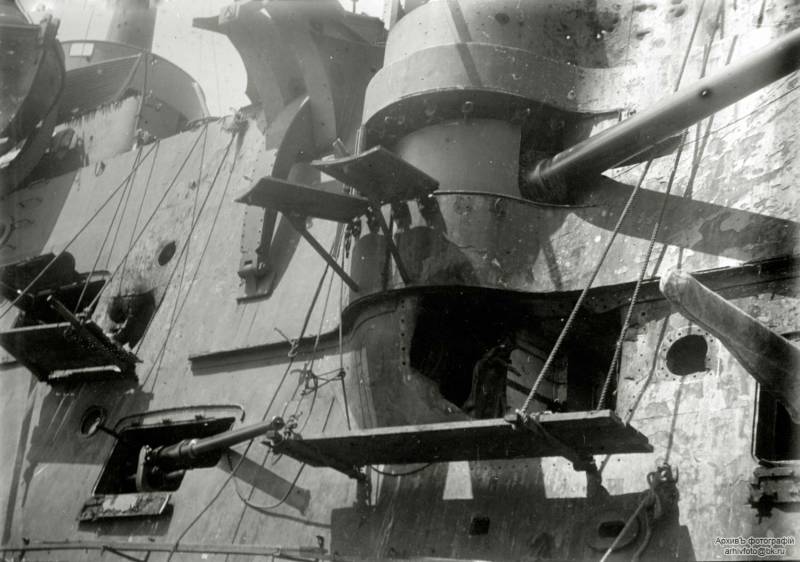
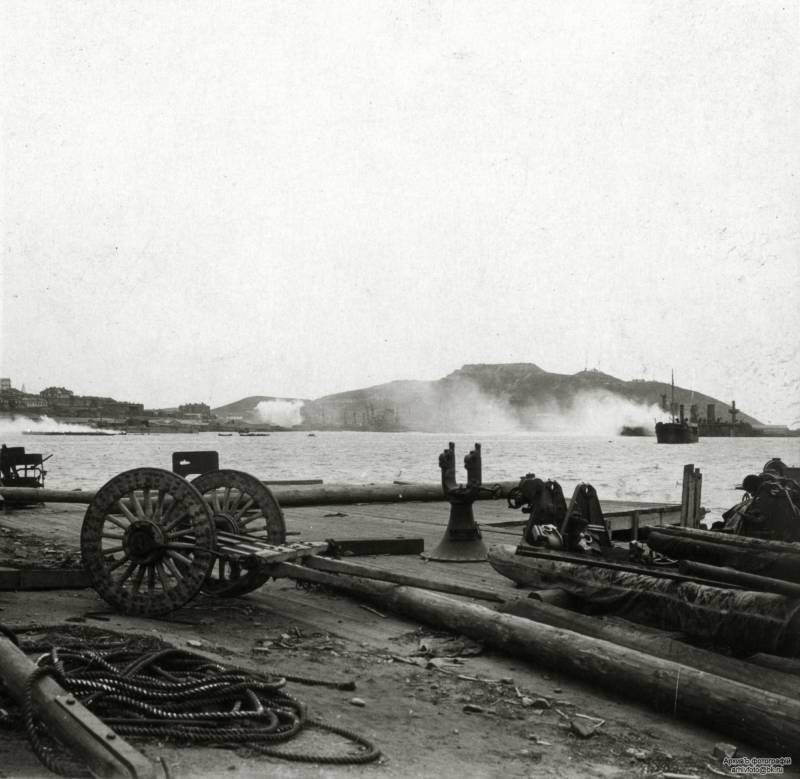
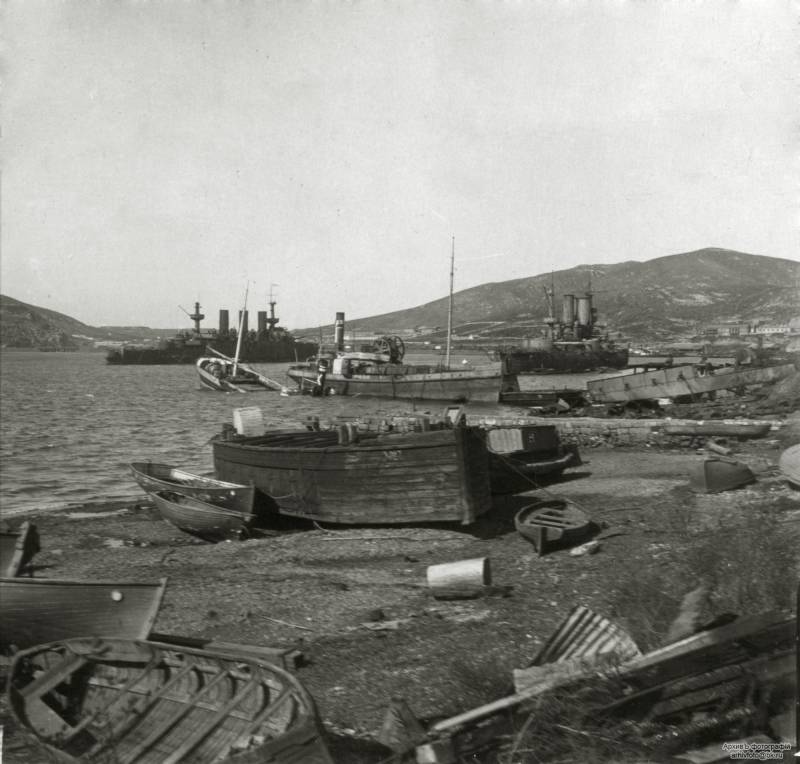
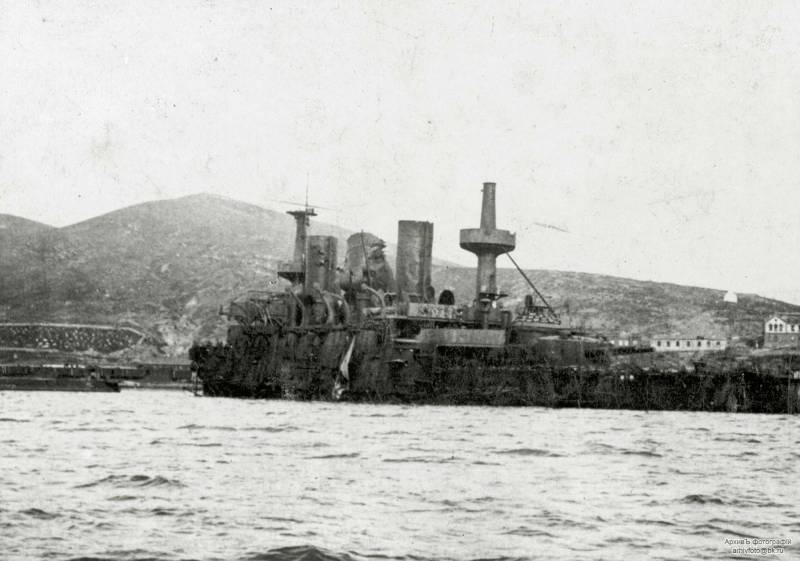
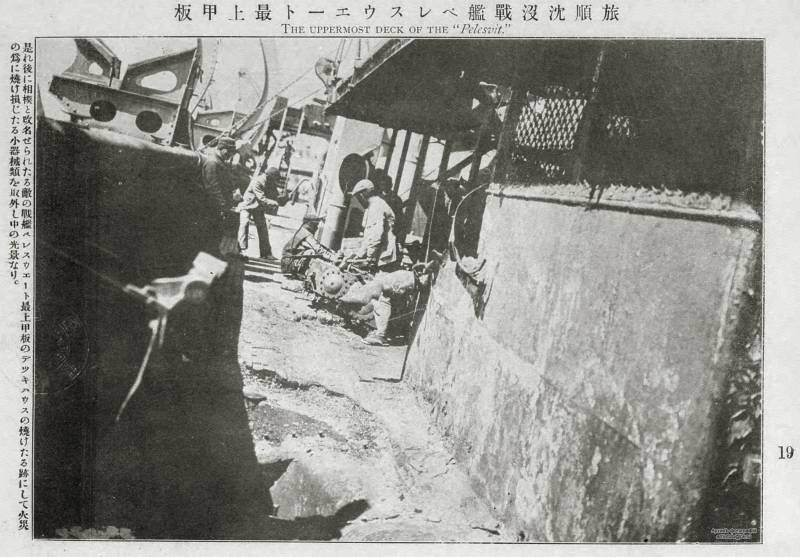
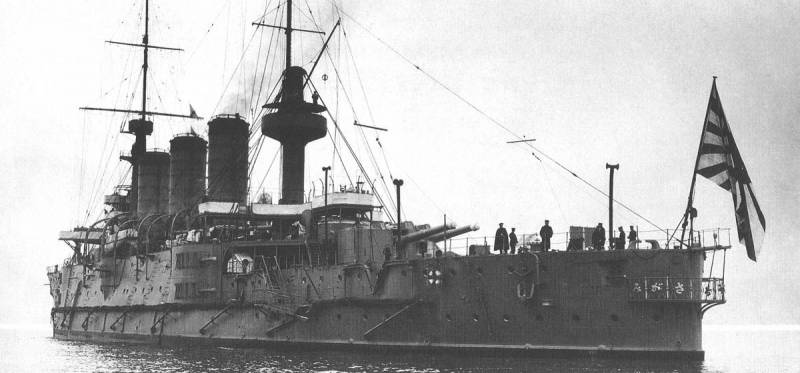
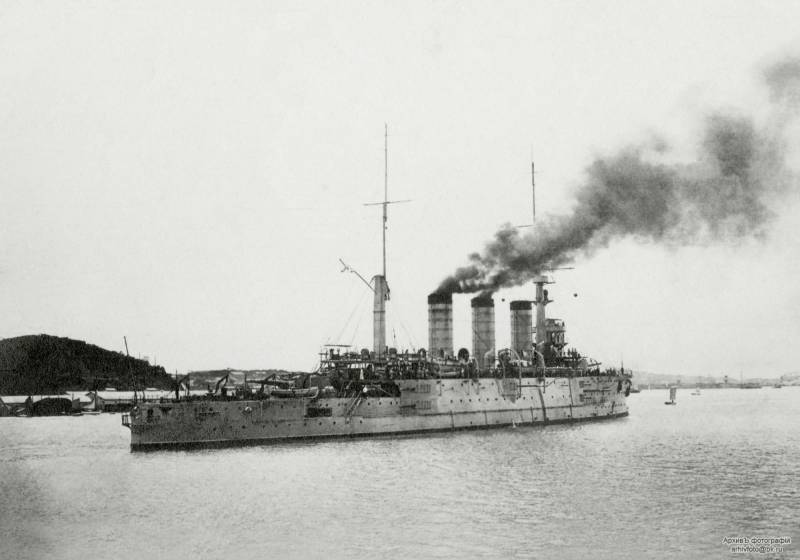
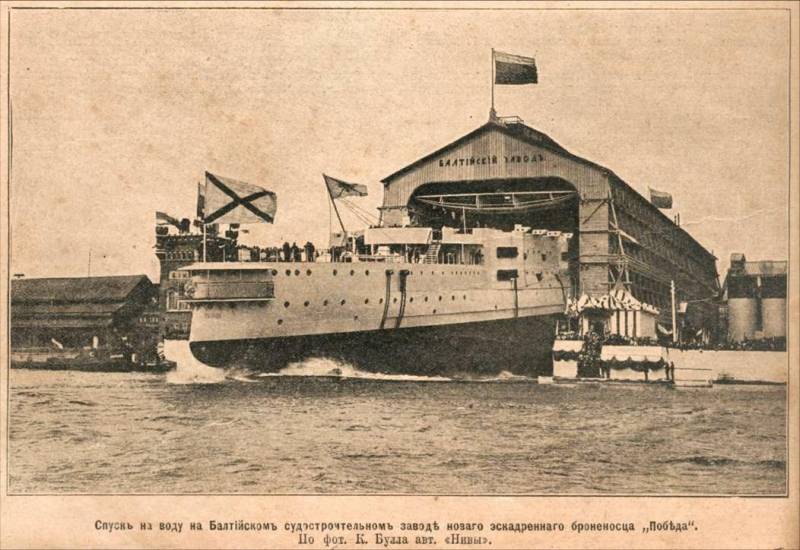
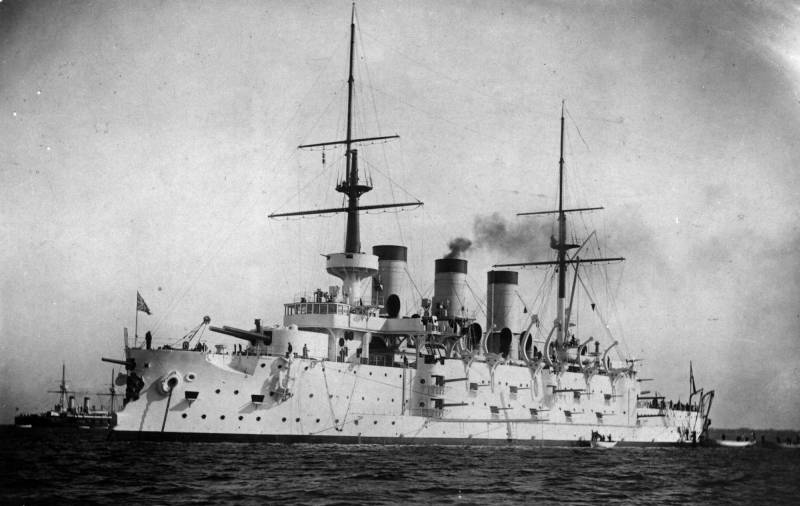
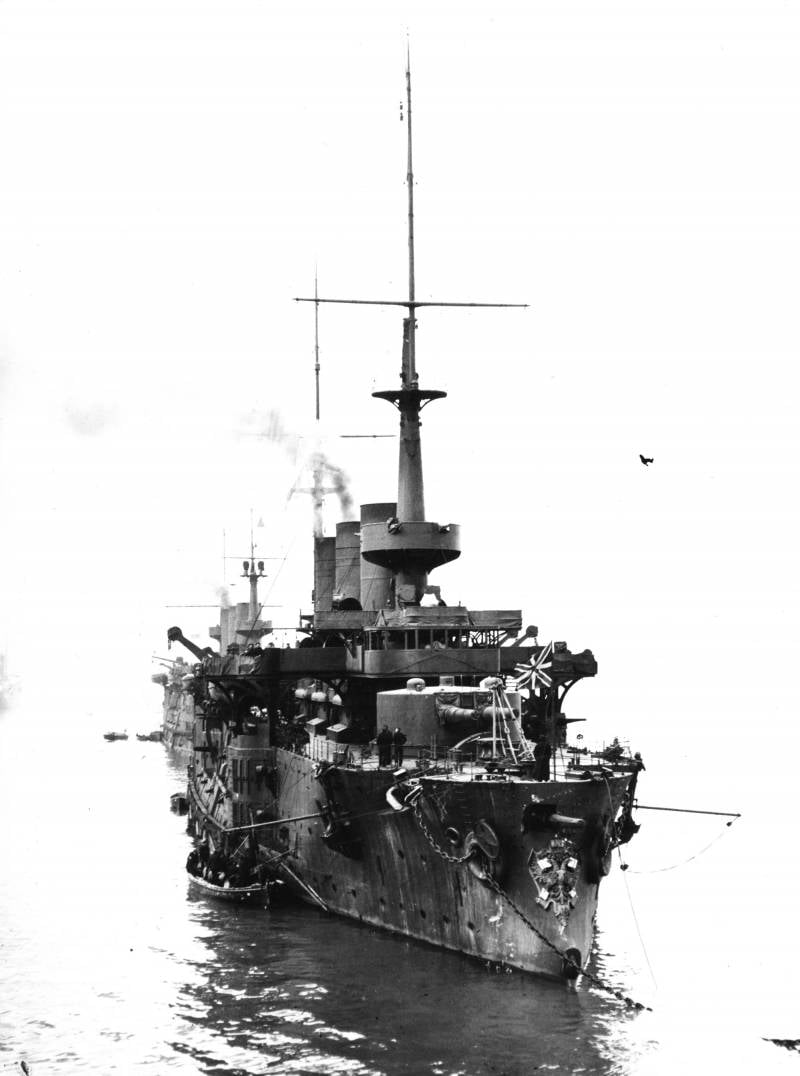
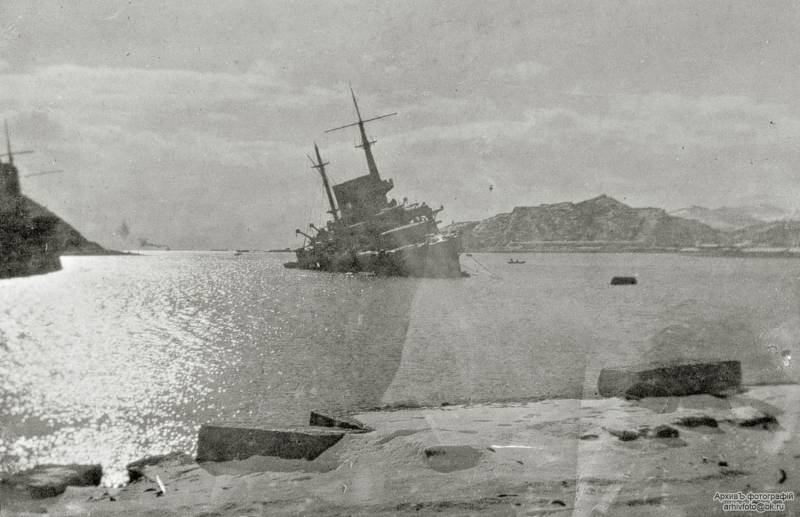
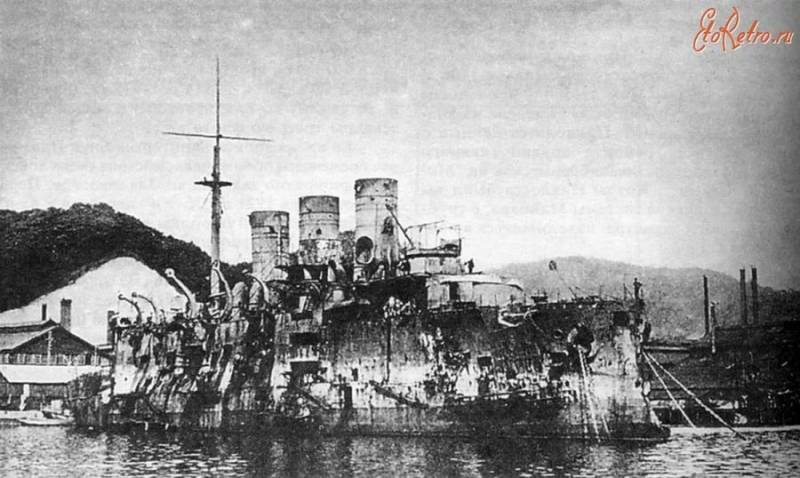
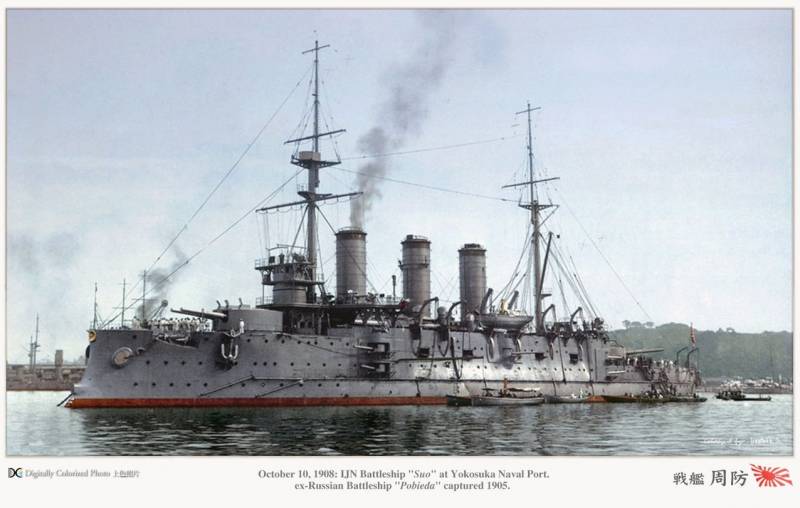
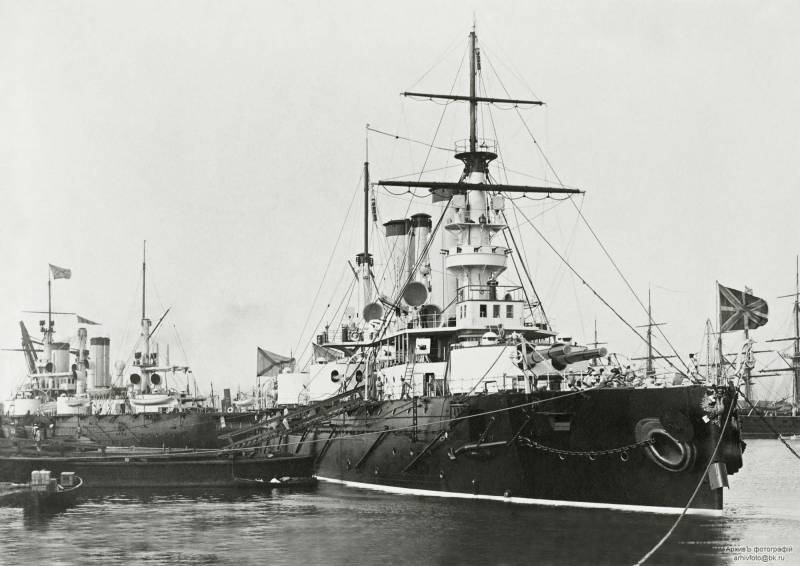
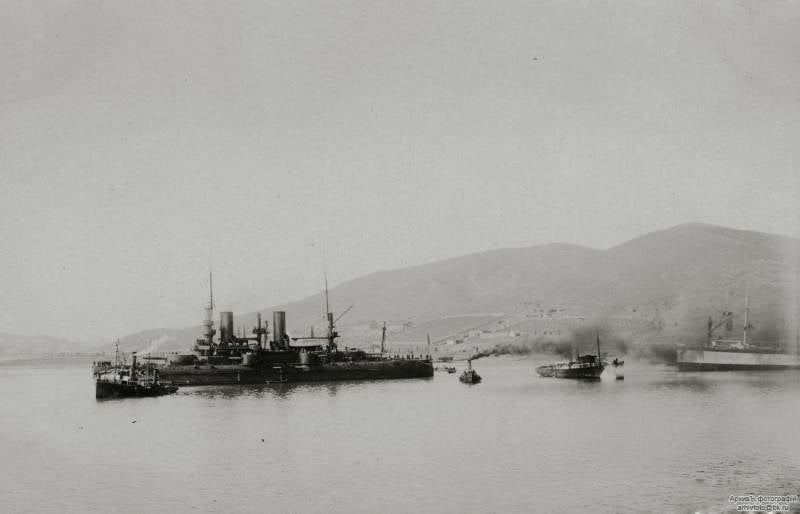
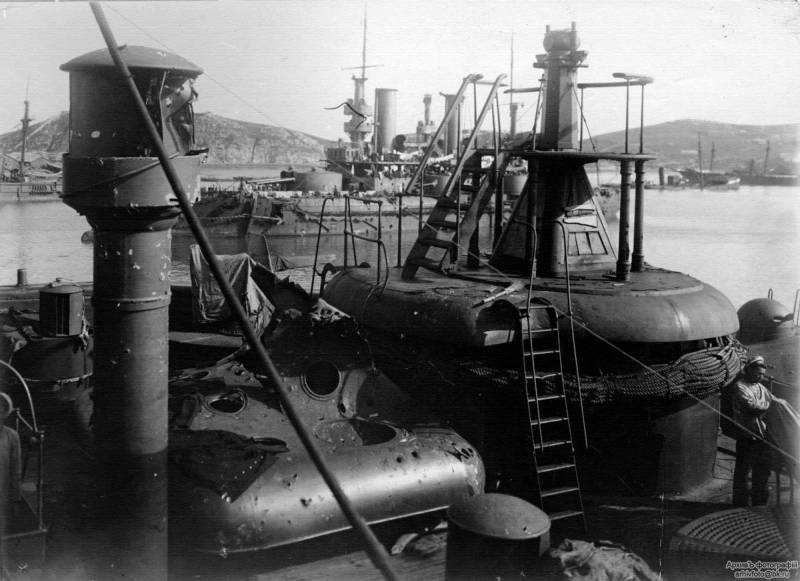
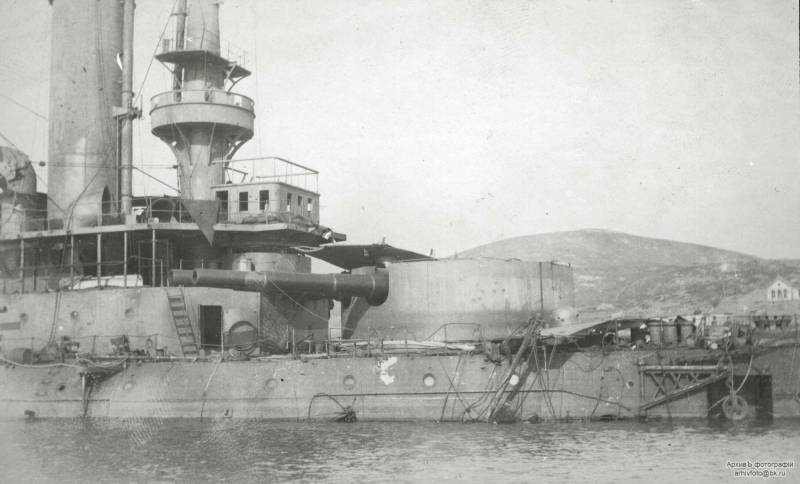
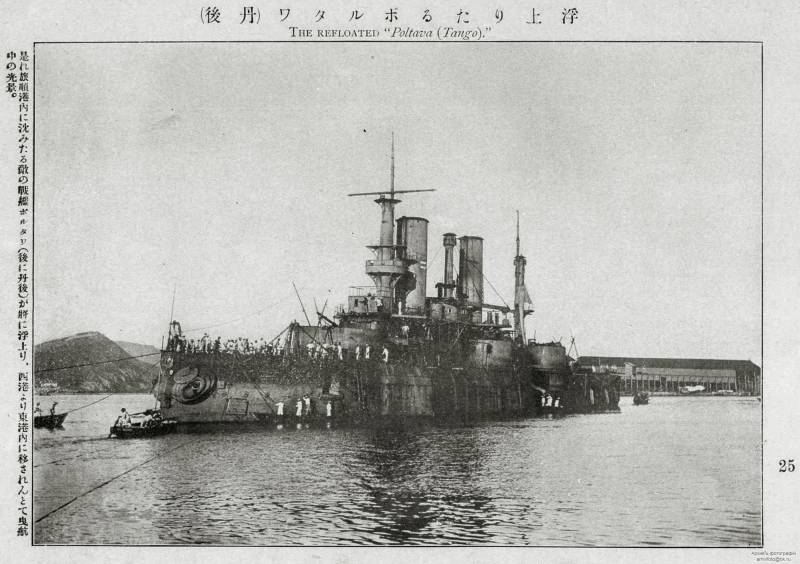
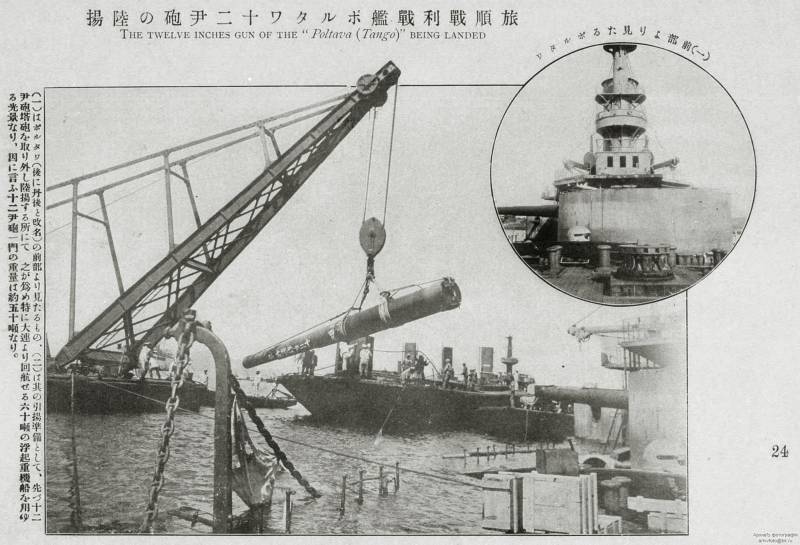
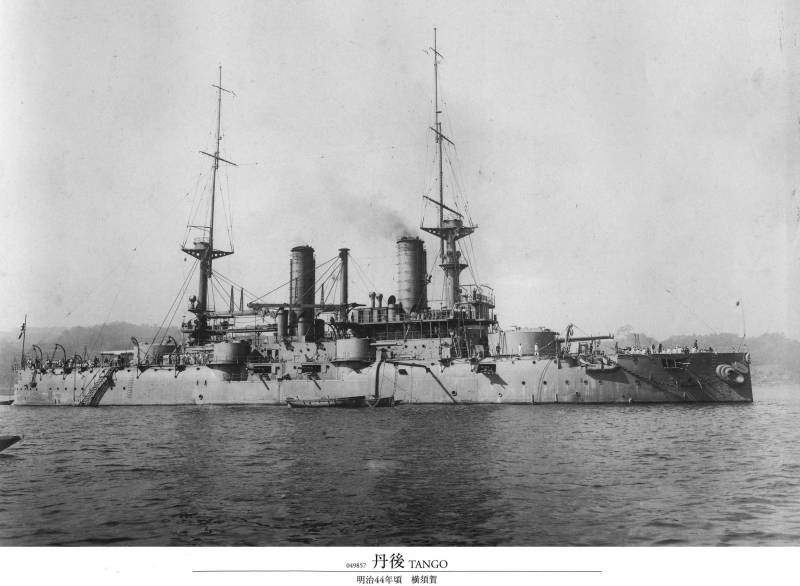
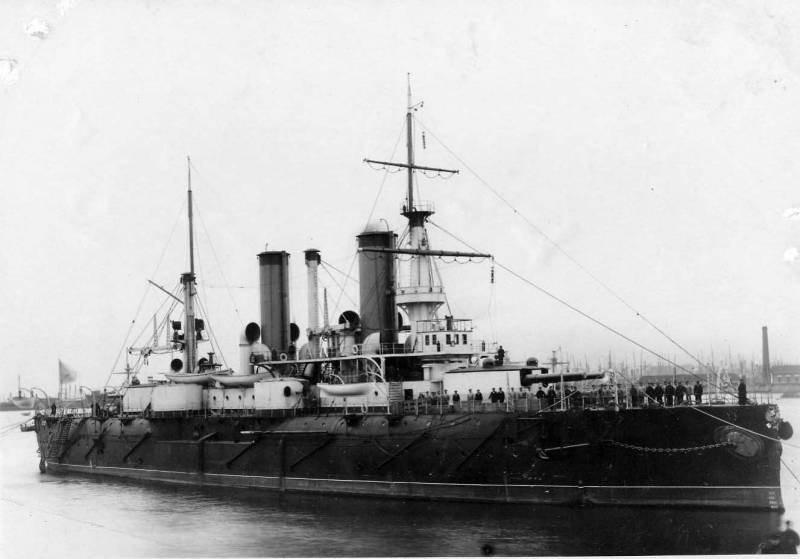
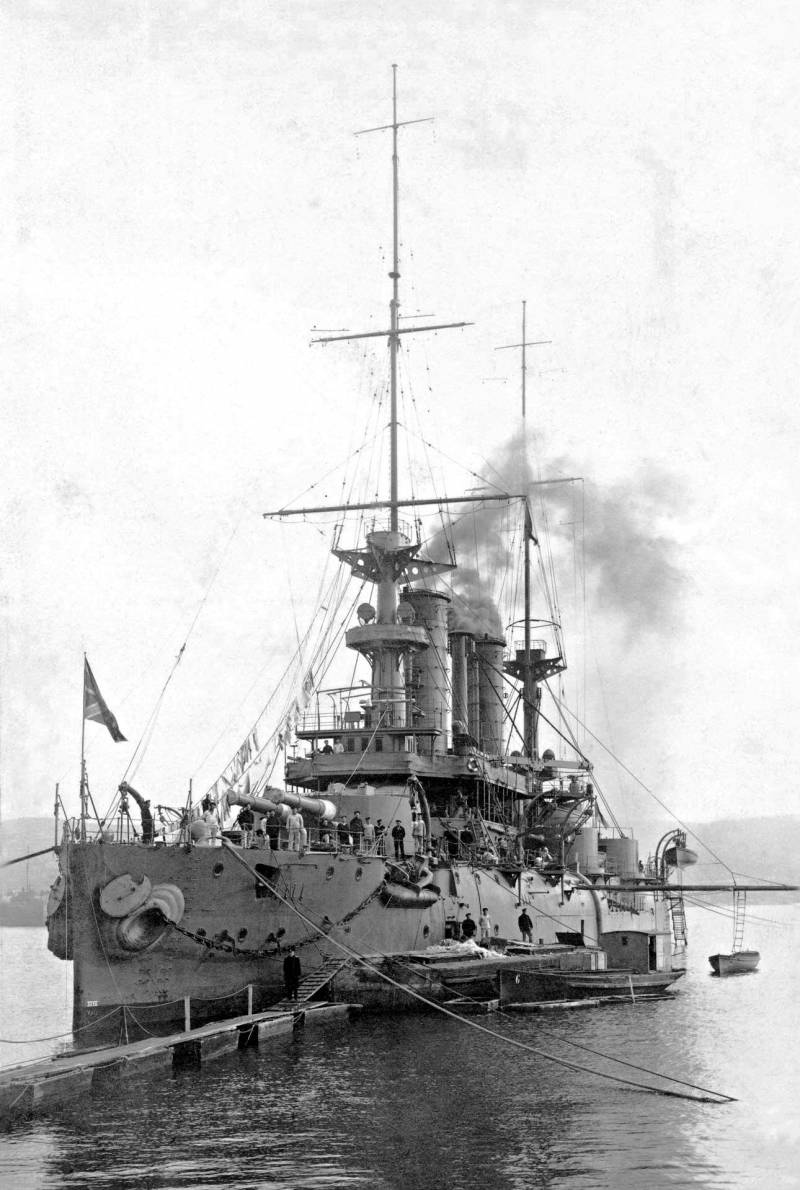
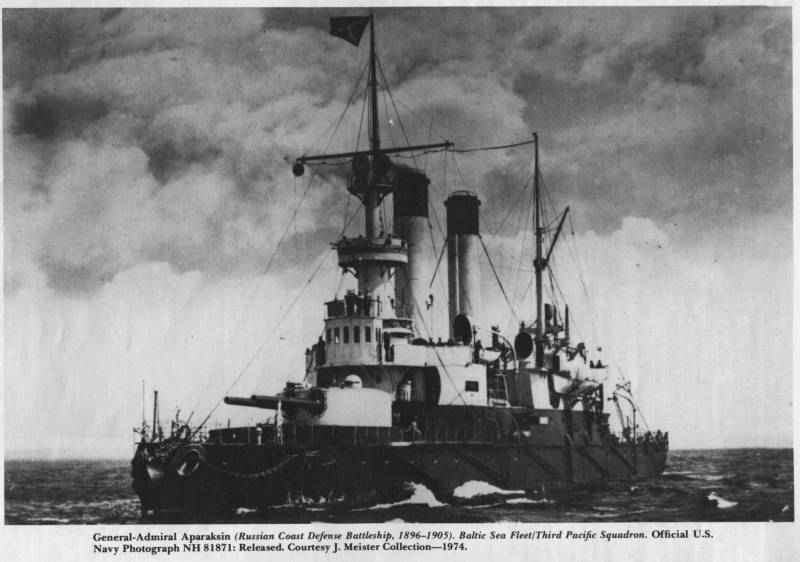
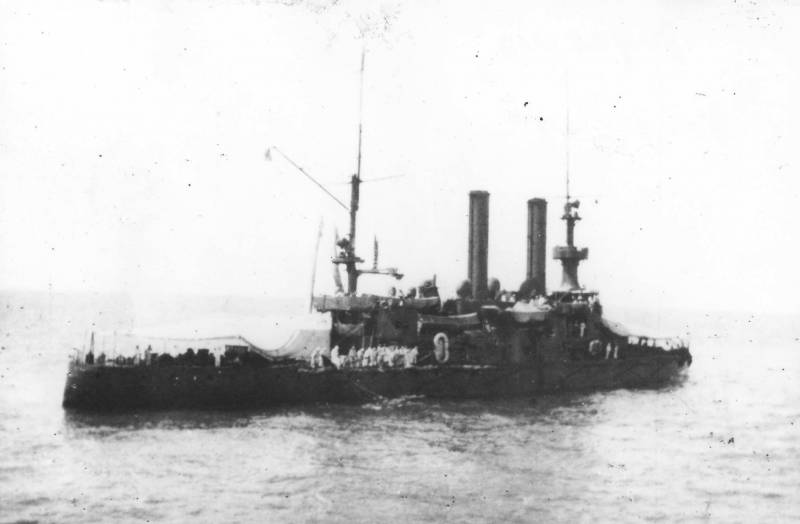
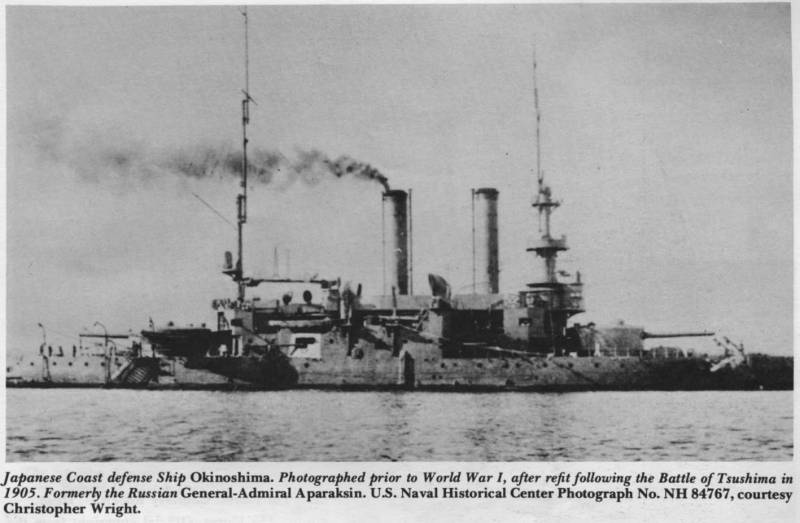
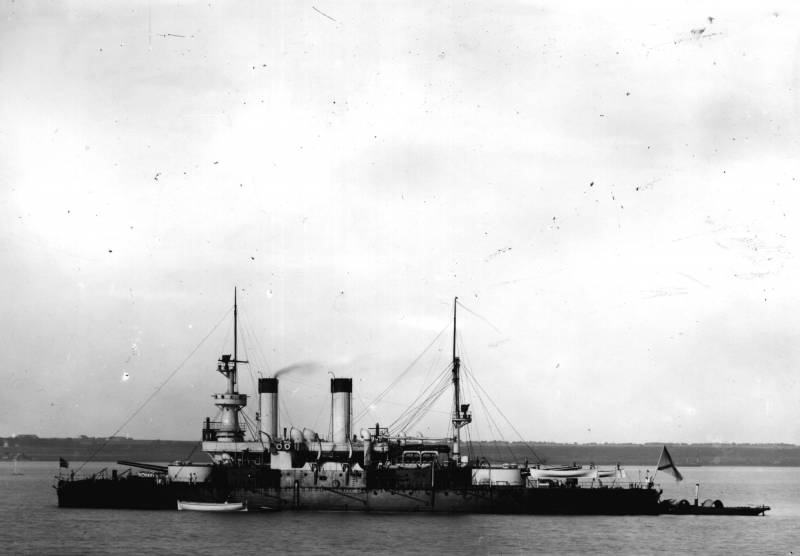
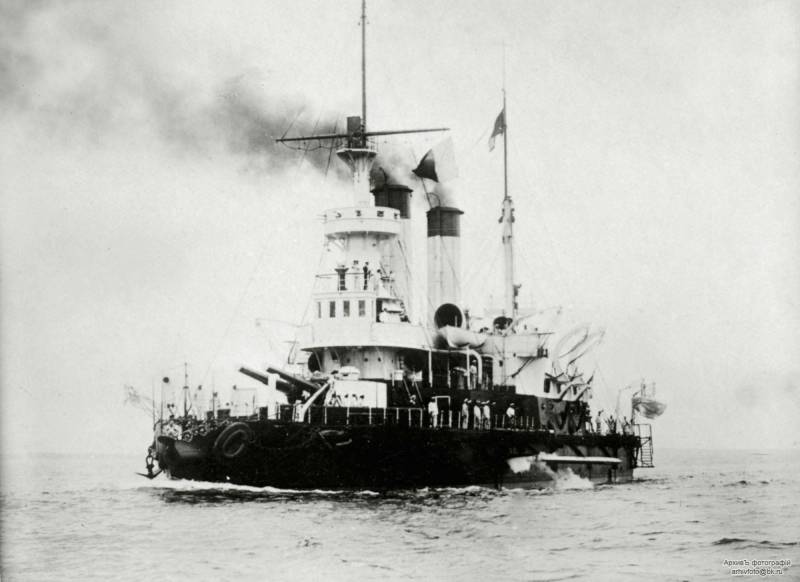
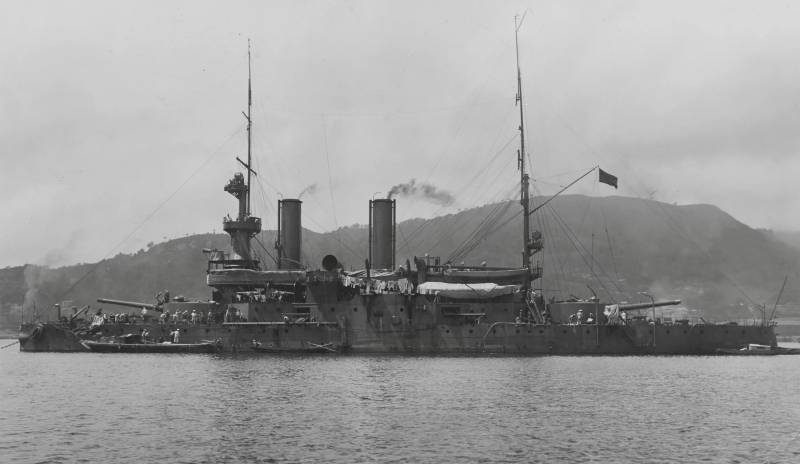
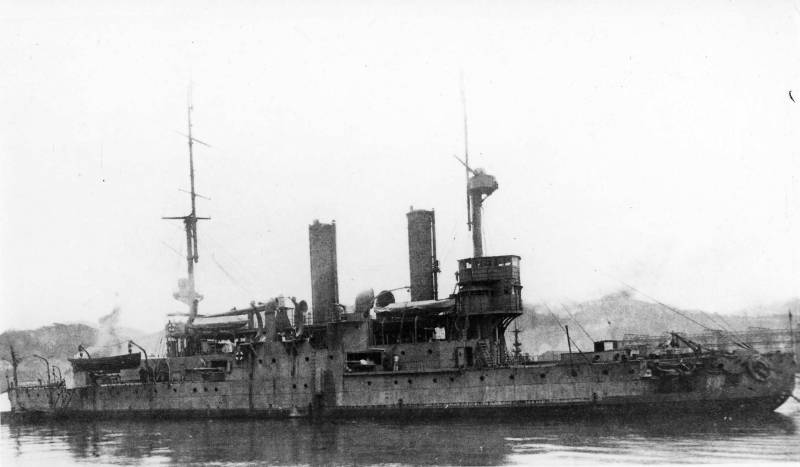
Information